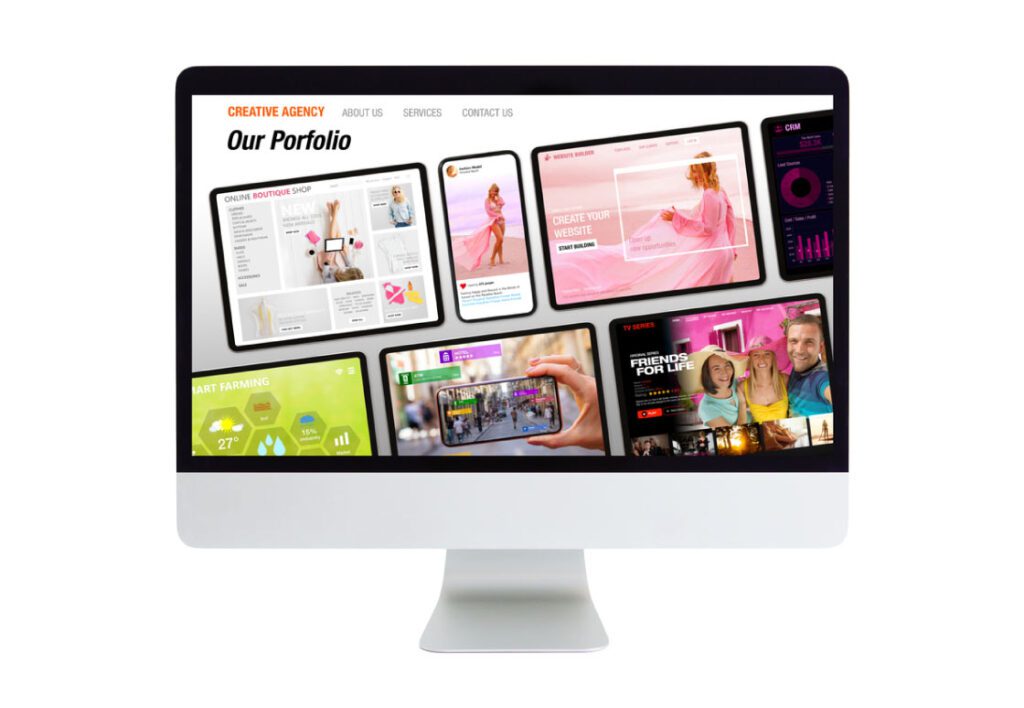In the competitive world of web development, having a strong portfolio is crucial for showcasing your skills and attracting potential clients or employers. Your portfolio serves as a visual representation of your work and abilities, allowing you to demonstrate your expertise and creativity.
In this article, we will explore some tips and best practices for building an impressive portfolio as a web developer, helping you stand out in the industry and increase your chances of success.
Selecting the Right Projects


When building your portfolio, it’s essential to showcase projects that highlight your strengths and align with your target audience’s needs. Consider including a mix of projects, ranging from personal projects to client work. Choose projects that demonstrate your versatility, technical proficiency, and problem-solving skills.
Start by identifying projects that you are most proud of and those that have received positive feedback. These projects should reflect your ability to deliver exceptional results and demonstrate your ability to meet client requirements effectively.
Additionally, emphasize projects that showcase your expertise in specific programming languages, frameworks, or technologies that are relevant to the job or clients you’re targeting. This can help you attract opportunities in your preferred niche and position yourself as an expert in those areas.
Quality Over Quantity


While it may be tempting to include every project you’ve ever worked on, it’s important to prioritize quality over quantity. A few well-executed and visually appealing projects are more impactful than numerous mediocre ones. Select projects that represent your best work and showcase a range of skills and techniques.
Focus on the projects that demonstrate your ability to solve complex problems, implement innovative solutions, and deliver outstanding user experiences. Consider the project’s impact, uniqueness, and the challenges you overcame during its development.
Showcasing Diverse Skill Set


Web development involves a variety of skills, including front-end development, back-end development, design, user experience (UX), and more. Your portfolio should reflect your proficiency in these different areas. Include projects that highlight your ability to create visually appealing user interfaces, optimize website performance, and implement responsive design.
Furthermore, consider creating separate sections or categories within your portfolio to showcase different skills or areas of expertise. This allows potential clients or employers to easily navigate and understand your skill set. For example, you can have sections dedicated to front-end development, back-end development, and UI/UX design.
Provide Project Details
When presenting your projects, provide relevant details that give insight into your development process. Include a brief description of each project, highlighting the client’s objectives, challenges faced, and how you overcame them. Discuss your role in the project and any specific responsibilities you had.
Additionally, showcase the technologies and frameworks used in each project. This helps demonstrate your familiarity with industry-standard tools and your ability to adapt to different project requirements. Mention any unique or innovative approaches you employed and the impact they had on the project’s success.
Include screenshots or images of the project to provide a visual representation of your work. If possible, provide links to live websites or interactive prototypes to allow visitors to experience the project firsthand.
User Experience Matters


Remember that your portfolio itself is a reflection of your design and development skills. Pay attention to the user experience of your portfolio website. Ensure it has an intuitive and visually appealing design, is easy to navigate, and loads quickly.
Optimize your portfolio for different devices and screen sizes, making it responsive and mobile-friendly. Potential clients or employers may view your portfolio on various devices, so it’s crucial to provide a seamless experience across all platforms.
Consider using modern design trends, such as clean layouts, intuitive navigation menus, and compelling visuals. Incorporate relevant call-to-action elements to guide visitors to explore your projects and contact you for potential opportunities.
Regularly Update and Refine
Web development is a constantly evolving field, and it’s important to keep your portfolio up to date. Regularly add new projects, remove outdated ones, and update project details as needed. Showcase your most recent and relevant work to ensure your portfolio accurately represents your current skill level.
Furthermore, seek feedback from peers or mentors to gain valuable insights and identify areas for improvement. Continuously refining your portfolio demonstrates your commitment to growth and development as a web developer.
Conclusion
Building a portfolio as a web developer is an ongoing process that requires careful selection, curation, and refinement. By selecting the right projects, prioritizing quality, showcasing a diverse skill set, providing project details, focusing on user experience, and regularly updating your portfolio, you can create a compelling showcase of your work.
Remember, your portfolio is your opportunity to make a strong first impression and stand out in the industry, so invest the necessary time and effort to create a portfolio that truly reflects your abilities and expertise.



